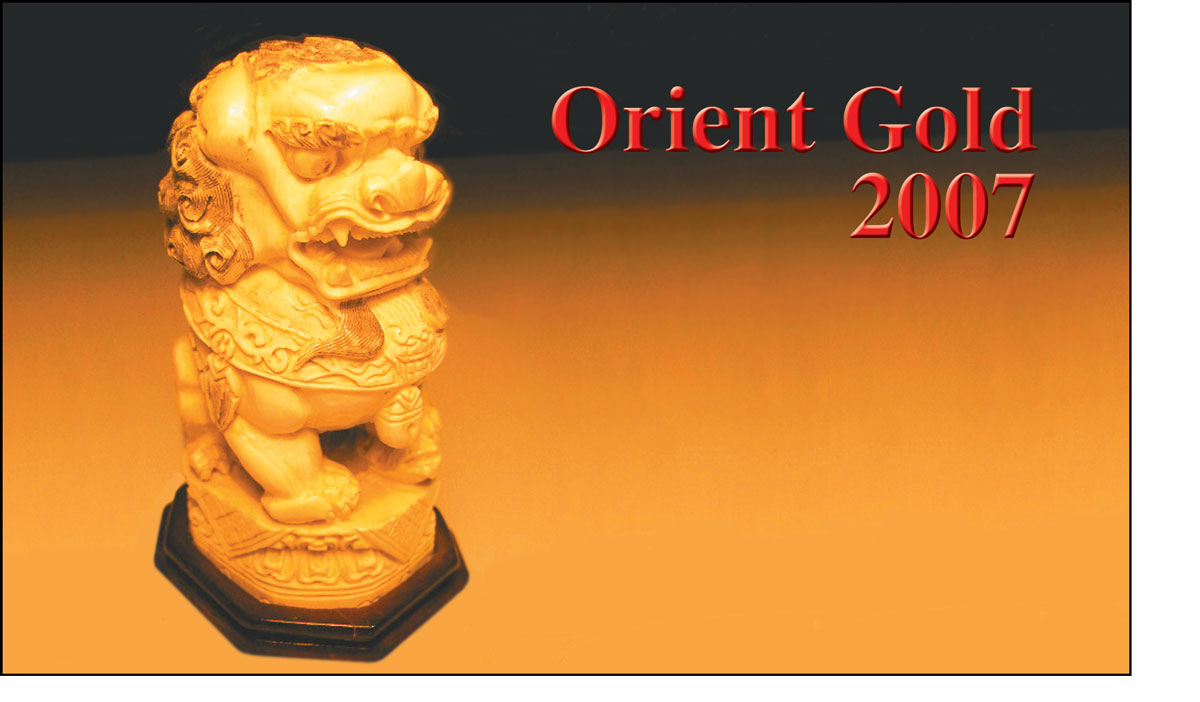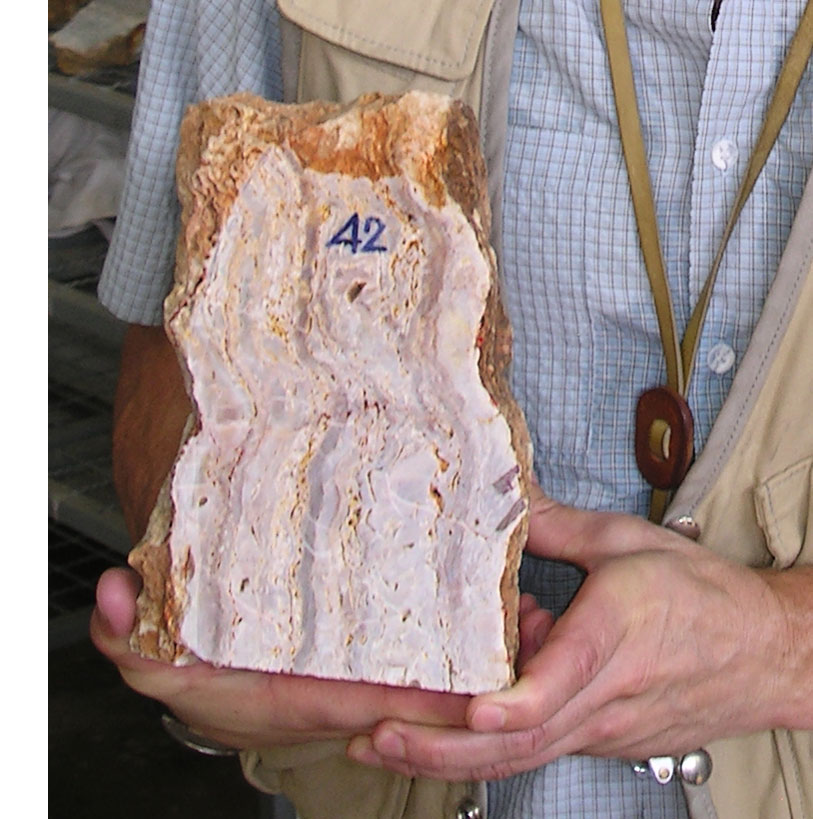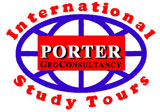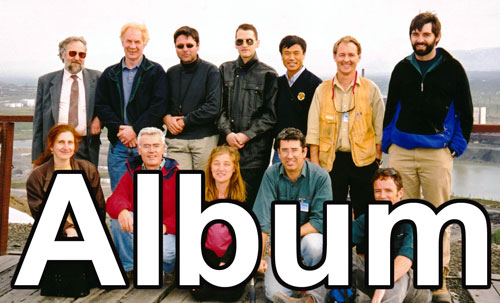| |||||||||||
|
Orient Gold 2007 Gold Deposits of the Orient 7 to 21 October 2007 | |||||||||||
|
| |||||||||||

Porter GeoConsultancy continued its International Study Tour series of professional development courses by visiting a representative selection of the most significant gold deposits in the major gold provinces of east Asia, from northern China, to Laos and Thailand in the south.
The tour commenced in Beijing, China on the evening of Saturday 6 October and ended in Bangkok, Thailand on the evening of Sunday 21 October, 2007. A comprehensive full day workshop was conducted in Beijing, China, at the beginning of the tour, to provide a context to the tectonic, geological and metallogenic setting of the gold deposits to be visited in China, and descriptions of, and comparisons with, other deposits in the region not on the itinerary. Participants were able to take any 5 or more days, up to the full tour, as suited their interests or availability. The tour program was as follows: China • Beijing Workshop - as outlined above, led by Dr Taihe Zhou of the Sino-QZ Group, an acknowledged international expert on the gold deposits of China, their setting, distribution, geology and mineralisation ..... Sunday 7 October, 2007. • Jiaodong Goldfield, ~450 km SE of Beijing on the Shandong Peninsular of eastern China, defined by several linear trends of Cretaceous fault and shear zone controlled orogenic gold deposits. The goldfield, which contains >1600 t of gold, is located on the southeastern margin of the North China Craton, immediately NW of the NE-SW trending Sulu Terrane. This terrane is the easternmost segment of the ultra-high pressure belt that marks the Late Permian to Early Jurassic suture between the North China and Yangtze cratons. The major Dayigezhuang gold mine was the focus of the visit ..... Monday 8 October, 2007. • Jinchangyu, orogenic style lode gold deposit within the ~1500 km long Yan-Liao Gold Province on northern margin of the North China Craton, ~180 km ENE of Beijing. Although gold mineralisation is found in association with both Variscan (Permo-Carboniferous) and Yanshanian (Jurassic to Cretaceous) tectono-magmatic events within the province, Jinchangyu appears to be related to the latter, hosted by Archaean granulite facies rocks ..... Tuesday 9 and Wednesday 10 October, 2007. • Xiaoqinling Gold District, visiting the Qinling (Yangchaiyu-Sifangou-Jindongpen) and neighbouring Wenyu-Dongchuang gold mines that are located ~150 km east of Xian in north-western Henan Province, central China. Gold deposits of the district are generally ~30 to 50 km in-board of the southern margin of the North China Craton, and the suture with the Yangtze Craton to the south. Mineralisation occupies structurally controlled veins cutting Neoarchaean to Palaeoproterozoic granite-greenstone-marble-iron formation and Mesoproterozoic granitic hosts. Gold is interpreted to have been emplaced in the Early Cretaceous, as part of the Mesozoic tectonic-metallogenic event caused by the collision between the Yangtze and North China cratonic blocks ..... Thursday 11 October, 2007. • Zijinshan epithermal Au and porphyry Cu-Au complex. Hydrothermal breccia and vein mineralisation is developed within Lower Cretaceous 125 ±4 Ma volcanic rocks in a small fault bounded volcanic basin, into which a dacitic volcanic dome complex was intruded. The Cretaceous sequence overlies a basement of Neoproterozoic and Devonian successions and Jurassic magmatic rocks. The hydrothermal breccias are mainly within dacitic domes in the upper part of the Zijinshan deposit, underlain at depth by a 105 ±10 Ma granodiorite porphyry that contains porphyry copper style mineralisation ..... Saturday 13 October, 2007. A visit was also planned to one of the carbonate-hosted 'Carlin-like' gold deposits of the Golden Triangle over the Yangtze Craton in SW Guizhou, SE Yunnan and NW Guangxi Provinces of southern China. However, this was not able to be accommodated.  Thailand
Thailand• Chatree is a low to intermediate sulphidation epithermal gold deposit. It lies within the Loei Magmatic Arc, a zone of parallel, north-south trending Upper Permian and Triassic acid to intermediate island arc volcanic and marine sedimentary rocks. This arc was developed above a subduction zone, prior to and during, the collision of the Southeast Asian and Shan-Thai crustal blocks. Mineralisation is hosted by Upper Permian to Upper Triassic porphyritic latite-trachyte flows, their pyroclastic equivalents and volcaniclastic rocks, with subordinate fine to medium grained volcaniclastics, all of which are silicified. Gold occurs in a multi-pulse, structurally controlled, adularia-sericite epithermal system within quartz-calcite-adularia veins, breccias and stockworks, deposited in dilational zones during repeated reactivation of pre-existing structures ..... Monday 15 & Tuesday 16 October, 2007. Laos • Sepon - The intrusive-centred, sediment-hosted Au-Cu Sepon mineral field lies within the Early to Mid Palaeozoic Truongson Fold Belt, ~40 km north of the town of Sepon, Savannakhet Province of south-central Laos. The Sepon mineral field includes porphyry, porphyry-skarn and carbonate replacement Cu-Mo/Au ores, as well as silica-pyrite replacement and jasperoid associated carbonate replacement gold ores. Seven gold and two copper deposit deposits are distributed over a 5 km interval containing >120 tonnes of gold and 1.2 Mt of copper ..... Thursday 18 October, 2007. • Phu Bia Project, which comprised the Phu Kham Cu-Au porphyry style, and the Phu Kham Gold Cap, and Ban Houayxai vein-disseminated gold deposits. These are developed where the NW-SE trending Truongson and NNE-SSW Loei island arc merge, ~150 km north of Vientiane in northwestern Laos. The known mineralisation is hosted by Palaeozoic sedimentary, tuffaceous and volcaniclastic rocks, which are intruded by Permo-Triassic porphyry bodies ..... Saturday 20 and Sunday 21 October, 2007. The tour was planned, organised, managed and escorted by Mike Porter of Porter GeoConsultancy Pty Limited. See the photo album, linked above, for more detail. Image lower right: Outcropping weathered epithermal vein that led to the discovery of the Chatree deposit. | |||||||||||
| |||||||||||
|
| |||||||||||












